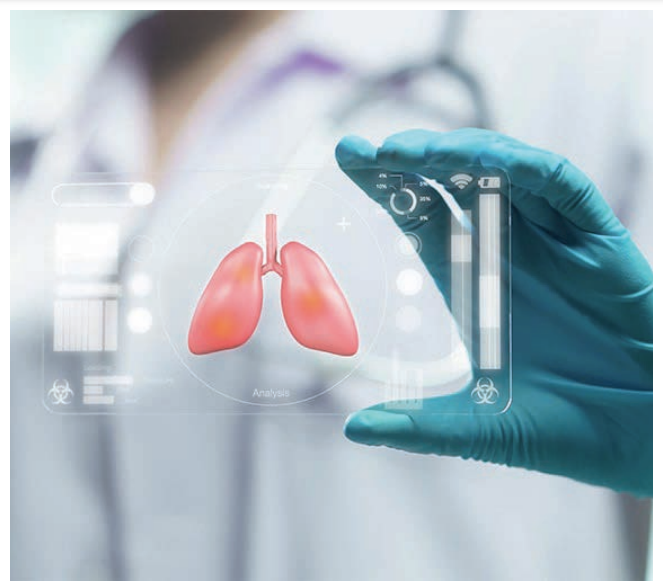Pulmonary Recovery Therapies in the Post-COVID patient
"According to the clinical studies carried out in the Techirghiol Spa and Recovery Sanatorium, these medical devices have demonstrated their effectiveness, proving to be effective means of adjunctive therapy for the recovery of patients with respiratory diseases, including post-COVID sequelae."


SARS-CoV-2 virus has infected millions of people causing a global pandemic which, even at the present time, continues to have a negative impact both from a medical and social point of view.
Structurally and phylogenetically, SARS-CoV-2 consists of four main structural proteins: spike (S), envelope glycoprotein (E), nucleocapsid (N), membrane protein (M), along with 16 nonstructural proteins and 5-8 accessory proteins. The surface spike (S) glycoprotein is located on the outer surface of the virion and is cleaved into an amino (N)-terminal S1 subunit, which facilitates the incorporation of the virus into the host cell and a carboxyl. The (C)-terminal S2 subunit containing a fusion peptide, a transmembrane domain, and a cytoplasmic domain facilitates virus-cell membrane fusion.
The pathogenesis of pneumonia induced by SARSCoV-2 mainly involves two stages: early and late. The early phase is characterized by viral replication resulting in direct virus-mediated tissue damage, followed by a late phase when infected host cells initiate the immune response.
Although the respiratory system is the main target for the SARS-CoV-2 virus, the virus can affect several organ systems such as the hepatobiliary system, the gastrointestinal tract, the renal system, the cardiovascular system, and the central nervous system.
An analysis of lung tissue obtained during autopsies of patients who tested positive for COVID-19 highlights typical features of diffuse alveolar lesions in 87% of cases. Inflammation of the airways and hyaline membranes in the alveolar areas as well as type II pneumocyte hyperplasia can also be distinguished. 42% of patients were observed to have large vessel thrombi, platelets (CD61 positive) and/or fibrin microthrombi in 84% of cases.
Numerous post-acute lung abnormalities have been reported in post-COVID patients. However, the extent and severity of long-term respiratory complications caused by SARS-CoV-2 infection remain a subject open to analysis; although current data indicate that many patients have persistent respiratory symptoms several months after the initial illness. Among the most common complications identified are chronic cough, fibrosis, bronchiectasis and pulmonary vascular diseases.
A particular attention is directed to the vulnerable categories, to the immunosuppressed patient, with severe pulmonary symptoms, where the occurrence of sequelae is much more frequent and the recovery process is slower.
The recovery process of the post-Covid patient involves both the monitoring of lung function and the initiation of various recovery therapies such as salt water aerosol therapy, electrotherapy methods, intermittent hypoxia hyperoxia normoxia therapy, etc.
(1) Salt water aerosol therapy
Inhalation in the form of salt water aerosols is an effective way of treating many conditions, especially those located at the lung level, the major advantage being the quick response to treatment. In the Techirghiol Spa and Recovery Sanatorium, a particularity of this form of therapy is the fact that the salt water used comes from the Techirghiol lake.
(2) HIVAMAT-DEEP OSCILLATION
The functioning system of HIVAMAT therapy consists of a pulsating electrostatic field generated in the treated segment of the patient’s body. In rhythm with the selected frequency, the segment of tissue under treatment is electrostatically attracted and then repelled, resulting in a resonant oscillation with a deep and lasting effect. Thus, a recovery of flexibility and mobility between fibers and individual layers is achieved, as well as the development and improvement of tissue irrigation.
The benefits of the therapy can be found both in respiratory ailments and at the systemic level. These include: anti-inflammatory and anti-fibrotic effect, resorption of edema, improvement of tissue quality and micro-circulation of the connective tissue, pain relief, muscle relaxation, acceleration of the healing and regeneration process, detoxification and improvement of mobilization.
(3) Treatment by hypoxia
hyperoxia normoxia - Celloxy
Medical studies have demonstrated that the use of short and controlled periods of moderate hypoxia and hyperoxia induce a type of cellular stress with therapeutic effects on the respiratory, cardiovascular, nervous, musculoskeletal, metabolic and hormonal systems.
This type of intermittent hyperoxia hypoxia therapy also corresponds to the operating principle of the Celloxy medical device. The device produces breathable air with different oxygen concentrations so that the patient alternately breathes a mixture of hypoxic and hyperoxic or normoxic air at predetermined intervals. The hypoxic and hyperoxic therapy phases are normobaric, and represent non-invasive procedures used in a wide range of conditions. The use of the device in post-COVID patients has mostly highlighted the improvement of symptoms, the recovery of lung function and the improvement of functional status. Other benefits reported in lung diseases are the increase in oxygen saturation, exercise capacity and expiratory volume, as well as the increase in the diffusion capacity of O2 and CO2 gases.
According to the clinical studies carried out in the Techirghiol Spa and Recovery Sanatorium, these medical devices have demonstrated their effectiveness, proving to be effective means of adjunctive therapy
for the recovery of patients with respiratory diseases, including post-COVID sequelae.

